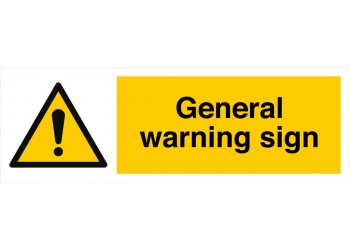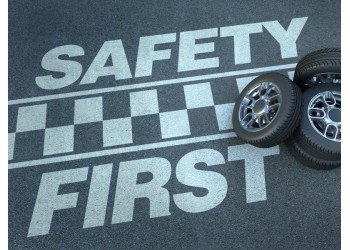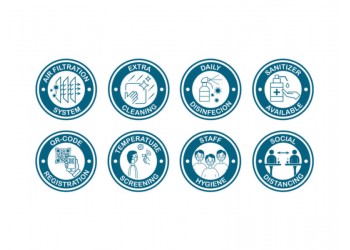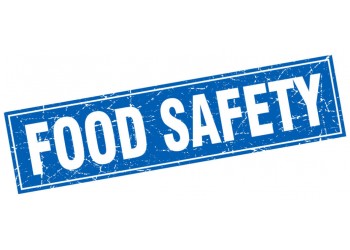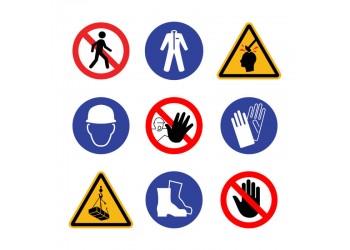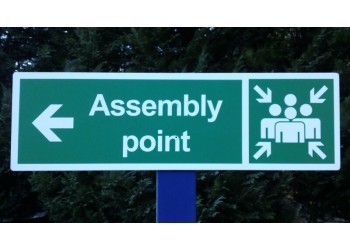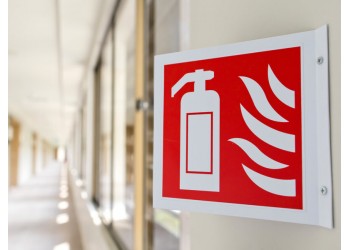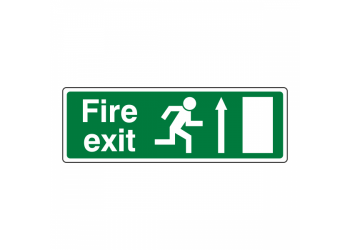In the hustle and bustle of public spaces, clear information signs play a crucial role in guiding, informing, and ensuring the safety of everyone.
This blog post is a deep dive into the importance of these signs for business owners and facility managers. We’ll discuss their purpose, types, design principles, legal requirements, their role in enhancing accessibility, and the need for regular maintenance.
Purpose of Information Signs
Information signs serve as silent guides, directing people and conveying crucial information to ensure smooth operations in public spaces.
Wayfinding and Direction
Wayfinding and directional signage are crucial for guiding foot traffic in public spaces, enhancing the visitor experience, and ensuring safety by clearly indicating entrances, exits, and facilities like restrooms or lifts.
Guiding Foot Traffic
Wayfinding and directional signage are pivotal in guiding foot traffic within public spaces. Efficient designs can reduce stress by providing clear, easy-to-follow instructions, enhancing the overall visitor experience. There are four types of wayfinding signs – identification, directional, informational, and regulatory – each serving a unique purpose.
Indicating Entrances and Exits
Signs indicating entrances and exits are crucial for smooth navigation and safety.
Pointing Towards Facilities Like Restrooms or Lifts
Directional signs also help point towards facilities like restrooms or lifts.
Providing Essential Information
Wayfinding and information signs are crucial to public spaces. They guide foot traffic, display operational hours, communicate rules, and warn about hazards. Proper design and placement enhance the visitor experience, reflecting a commitment to safety and accessibility.
Displaying Operational Hours
Information signs displaying operational hours help visitors plan their visits efficiently. These signs contribute to better customer service and improved visitor experience.
Communicating Rules and Regulations
Signs are also instrumental in communicating rules and regulations. Regulatory signs, one of the four types of wayfinding signs, are essential in enforcing compliance.
Informing About Potential Hazards
Information signs are also used to inform about potential hazards, contributing to public safety. These signs follow legal requirements such as the Health and Safety Regulations and British Standards.
In summary, information signs serve as guides in public spaces, directing traffic, enhancing visitor experience, and ensuring safety. They indicate entrances, exits, and facilities, display operational hours, communicate rules, and inform about potential hazards. Their design and placement reflect a commitment to safety, accessibility, and compliance.
Types of Information Signs
Different types of information signs serve different purposes, from providing directions to communicating safety instructions.
Directional Signs
Directional signs serve the crucial role of guiding people in public spaces.
Indicating Paths and Directions
Directional signs effectively guide foot traffic by indicating paths and directions. These signs are often used in large public spaces like shopping centres, universities, or office buildings to help visitors navigate easily.
Guiding Towards Specific Facilities or Areas
Directional signs also play a crucial role in guiding visitors towards specific facilities or areas, such as restrooms, exits, or customer service desks. Clear and well-placed signs can significantly enhance the visitor experience.
Instructional Signs
Instructional signs provide essential information to the public. They detail rules and regulations and provide safety instructions, ensuring visitors understand what behaviour is expected and any restrictions in place.
Detailing Rules and Regulations
Signs detailing rules and regulations are particularly important in public spaces where certain behaviours are required or prohibited. These signs help manage visitor expectations and maintain order.
Providing Safety Instructions
Safety instructional signs are critical for communicating potential hazards or safety procedures. These signs are often used in workplaces or public facilities to ensure the safety and well-being of visitors.
In summary, information signs, including directional and instructional signs, provide essential guidance and safety information in public spaces. Directional signs aid navigation and point to specific facilities, while instructional signs detail rules, regulations, and safety procedures to ensure visitor safety and order.
Design Principles for Effective Signs
Effective sign design ensures that the information is communicated clearly and quickly.
Clarity and Legibility
Clarity and legibility are critical factors in effective sign design. They ensure that the information conveyed is easily understood by all viewers, regardless of their linguistic or cognitive abilities.
Using Clear and Readable Fonts
Using clear and readable fonts in signage helps ensure the information is easily understandable.
Ensuring Adequate Contrast Between Text and Background
Ensuring adequate contrast between text and background is essential for visibility.
Brevity and Simplicity
Brevity and simplicity in sign design make information easy to digest and understand, enhancing the effectiveness of the sign.
Conveying Information in Concise, Simple Terms
Conveying information in concise, simple terms ensures the message is quickly understood. The Plain English Campaign advocates for clear, concise language in public communication to enhance understanding.
Using Universally Understood Symbols Where Possible
Using universally understood symbols where possible can make signs more accessible to a broader audience, including non-English speakers and those with reading difficulties. ISO provides a catalogue of internationally recognised graphical symbols that can be used in signage.
In summary, practical sign design principles include clarity and legibility, using clear and readable fonts, ensuring adequate contrast between text and background, brevity and simplicity, conveying information concisely, and using universally understood symbols to reach a wider audience.
Legal Requirements for Information Signs
Complying with legal requirements is crucial when designing and installing information signs.
The Health and Safety (Safety Signs and Signals) Regulations 1996
The Health and Safety (Safety Signs and Signals) Regulations 1996 is a UK regulation that sets out the requirements for using safety signs at work. This comprehensive legal document ensures that businesses and public spaces follow a standardised system for safety signs, reducing risks and enhancing public safety.
Understanding the UK Regulations on Safety Signs
Understanding these regulations is crucial for anyone creating or installing safety signs. It’s important to know what each type of sign means, when and where they should be used, and how they should be maintained. The HSE website provides a comprehensive guide to understanding these regulations.
Ensuring Compliance with These Regulations
Ensuring compliance with these regulations is not just about adhering to the law; it’s also about creating a safe and secure environment. Regular checks, maintenance, and updates are essential to ensure all signs meet the required standards.
British Standards (BS EN ISO 7010)
British Standards (BS EN ISO 7010) is an internationally recognised standard for safety signs. This standard ensures consistency in design, making signs easily recognisable and understood, regardless of language or culture.
Recognising the Standard for Safety Signs
Recognising this standard involves understanding the specific symbols, colours, and shapes used in safety signs. The BSI Group provides resources to help understand and recognise these standards.
Adhering to This Standard in Sign Design and Installation
Adhering to BS EN ISO 7010 in sign design and installation ensures that signs effectively convey safety information.
This adherence not only provides legal compliance but also contributes to the overall safety and welfare of the public. Adhering to legal requirements like the UK’s Health and Safety (Safety Signs and Signals) Regulations 1996 and British Standards (BS EN ISO 7010) is essential when designing and installing information signs.
Such compliance ensures uniformity in safety signs, contributing to public safety and legal conformity.
Enhancing Accessibility with Signage
Information signs can significantly improve accessibility in public spaces when designed thoughtfully.
Signs for Visually Impaired Individuals
Signs for visually impaired individuals should be designed with features that facilitate easy comprehension.
Incorporating Tactile Features or Braille
Incorporating tactile features or Braille into signage can greatly assist visually impaired individuals.
Raised letters, braille translations, and textured surfaces can provide necessary information through touch. These additions help ensure the visually impaired can navigate public spaces independently and safely.
Using High-Contrast Colours for Better Visibility
Using high-contrast colours for better visibility is another effective strategy. This involves using a dark colour against a light one or vice versa to make the sign stand out more clearly. High contrast can help those with partial vision or colour blindness discern the information more easily.
Signs for Non-English Speakers
Public spaces often host visitors from diverse linguistic backgrounds. Therefore, it’s essential to design signs that are accessible to non-English speakers as well.
Including Translations Where Necessary
Including translations where necessary can significantly affect accessibility for non-English speakers. Multiple language translations on signs, especially in areas with diverse populations or high tourist traffic, help ensure everyone understands essential information.
Using Universally Recognised Symbols
Using universally recognised symbols can also play a significant role in making signs more accessible.
Symbols transcend language barriers and can be understood by people regardless of their native language. Symbols for restrooms, exits, and everyday hazards are widely recognised and can be used effectively on signage.
In summary, the thoughtful design of information signs enhances accessibility in public spaces. This involves incorporating tactile features, Braille, and high-contrast colours for the visually impaired. For non-English speakers, including translations and universally recognised symbols can significantly improve understanding and safety.
The Need for Regular Maintenance
Regular maintenance ensures that information signs remain visible, legible, and effective.
Regular Cleaning and Inspection
Regular cleaning and inspection of signs are essential to maintain their effectiveness and longevity.
Cleaning Signs to Keep Them Legible
Dirt, dust, and grime can accumulate on signs over time, making them difficult to read. Regular cleaning ensures that signs remain legible and continue to convey information effectively. Appropriate cleaning materials are crucial to prevent damage to the sign’s surface.
Inspecting for Damage or Wear and Tear
Signs should be regularly inspected for any damage or wear and tear. This includes checking for fading, cracks, scratches, or any other physical damage that could impact the sign’s visibility or readability.
Timely Replacement
Timely replacement of signs is essential to ensure they continue to serve their purpose effectively.
Replacing Faded or Damaged Signs
Faded or damaged signs can be difficult to read and may fail to convey the intended message. They should be replaced promptly to ensure continuous communication of vital information.
Updating Signs as Needed to Reflect Changes
Signs should be updated as needed to reflect information, regulations, or environmental changes. For example, if a building layout changes, the directional signs should be updated accordingly. Similarly, if safety regulations change, relevant signs should be updated to reflect these changes.
In summary, the regular maintenance and cleaning of signs are vital for their visibility, legibility, and effectiveness. Regular inspections for damage, timely replacements of faded or damaged signs, and updates reflecting changes in information or regulations are essential to ensure signs continually convey accurate information.
Importance of Correct Placement
The effectiveness of information signs heavily depends on their correct placement in public spaces.
Visibility and Accessibility in Signage
Visibility and accessibility are two key considerations when installing signage in public spaces. Ensuring that signs are easy to see and read can significantly enhance the user experience and improve overall accessibility.
Placing Signs at Eye Level for Maximum Visibility
One effective way to ensure visibility is to place signs at eye level. This makes them immediately noticeable and easily read, even from a distance. It also helps minimise strain for individuals with difficulty looking up or down.
Ensuring Signs are Accessible and Not Obstructed by Any Objects
Signs should also be accessible, meaning any objects should not obstruct them. Obstructions can make it difficult for people to see the sign and understand its message. Therefore, it’s essential to carefully consider the placement of signs to ensure they are evident and accessible from all angles.
Contextual Placement of Signs
The context in which signs are placed can significantly impact their effectiveness. The placement should be logical and intuitive to help users navigate the space easily.
Installing Signs Close to the Area They Refer To
Signs should ideally be installed close to the area they refer to. This helps users connect the information on the sign with the physical space, making navigation easier.
Using Multiple Signs for Larger Areas or Complex Instructions
Using multiple signs can be beneficial for larger areas or situations where instructions are complex. This helps break down the information into manageable chunks, making it easier for users to understand and follow the instructions.
In summary, placing information signs in public spaces greatly influences their effectiveness. Key considerations include ensuring visibility and accessibility, placing signs at eye level, avoiding obstructions, considering the placement context, installing signs close to the relevant areas, and using multiple signs for complex instructions or larger areas.
The Role of Aesthetics in Signage
While the primary purpose of information signs is functional, aesthetics are crucial in making them more engaging and noticeable.
Consistency in Design
A consistent design across all signs in a particular setting can create a visually harmonious environment and make navigation easier for visitors. It also contributes to building a solid brand identity.
Maintaining a Consistent Theme or Colour Scheme Across All Signs
Consistency in theme or colour scheme can help users quickly identify and understand signage. When all signs share common elements, such as colours, fonts, or styles, they become more recognisable and informative.
Using Brand Elements Like Logos or Taglines Where Appropriate
Incorporating brand elements like logos or taglines on signs can reinforce brand identity and create a sense of familiarity. These elements can make your signage instantly recognisable, enhancing the overall user experience.
Creativity and Engagement
While functionality is key, signage doesn’t have to be purely practical. Creative and engaging signs can enhance visitors’ experience and create memorable impressions.
Using Creative Designs to Make Signs More Engaging
Creative designs can make signs more visually appealing and engaging. This can involve using unique shapes, artistic fonts, or eye-catching graphics. Such designs can draw attention and make the information on the signs more memorable.
Incorporating Humour or Local Culture to Make Signs More Relatable
Incorporating humour or local cultural elements into signage can make them more relatable and interesting. This approach can create a positive emotional response, making visitors more likely to remember the information and feel a connection to the space.
In summary, aesthetics in signage, while serving a functional purpose, enhance engagement and visibility.
Consistency in design and colour scheme, along with including brand elements, can reinforce brand identity and improve user experience. Creative designs incorporating humour or local culture can make signs more appealing, memorable, and relatable, thus enhancing the visitor’s experience.
Impact of Information Signs on Brand Perception
Information signs can significantly influence how visitors perceive your brand or establishment.
Professionalism and Attention to Detail
The quality and upkeep of signs in a public space or business often reflect the organisation’s level of professionalism.
High-Quality, Well-Maintained Signs Reflect Professionalism
High-quality, well-maintained signs send a message that the organisation values quality and professionalism. This can positively impact people’s perception of the organisation, influencing their overall experience.
Attention to Detail Like Spelling, Grammar, and Design Shows Care and Competence
Attention to detail in aspects like spelling, grammar, and design is crucial. Mistakes in these areas can portray an image of carelessness, while correct and thoughtful design shows competence and meticulousness.
Commitment to Safety and Accessibility
Signage is also crucial in demonstrating an organisation’s commitment to safety and accessibility.
Clear Safety and Accessibility Signs Show Commitment to Visitor Welfare
Clear and concise safety signs prevent accidents and ensure visitor welfare. Similarly, accessibility signs (like wheelchair access signs) show that the organisation considers all visitors’ needs.
Multilingual Signs and Signs for the Visually Impaired Reflect Inclusivity
Including multilingual signs and signs designed for the visually impaired reflects a commitment to inclusivity. These signs ensure that information is accessible to a broader range of people, regardless of language proficiency or visual ability.
In summary, the presence and quality of information signs influence brand perception, indicating a company’s professionalism and attention to detail. Well-maintained signs suggest a commitment to quality, while precise spelling, grammar, and design show competence.
Furthermore, clear safety and accessibility signs reveal an organisation’s commitment to visitor welfare and inclusivity, with multilingual and visually-impaired friendly signs emphasising this inclusivity.
Enhance Your Space with Our Comprehensive Collection of Information Signs
Providing clear and concise informational guidance is crucial in any space, be it public or private. Our extensive range of Information Signs communicates essential directives, reminders, warnings, or details to help navigate any environment more easily.
We stock various indicators designed to cater to specific needs – from general door signs to intricate security signs. Crafted from high-quality, durable materials, our signs promise longevity and visibility, ensuring your message is noticed. Our signs are an investment towards a more informed and safer space.
Dog Signs
Our “No Dogs in the Playground Area Sign” is an essential addition to any public playground or park, ensuring a safe, enjoyable environment for children to play. Vibrantly coloured for easy visibility, this sign sends a clear message that dogs, while loved, must be kept away from play areas to prevent any possible accidents or disturbances.
Furthermore, the “You Must Clean Up After Your Dog Sign” is another crucial sign in our collection. It is a straightforward reminder for dog owners about their responsibility to maintain cleanliness in public spaces.
Made with durable materials, this sign withstands harsh weather conditions, ensuring its message remains clear and visible, promoting civic sense and contributing to a cleaner environment.
Escalator Safety Signs
The ‘Please Stand to the Left’ escalator sign is crucial for maintaining orderly flow in busy public spaces, such as underground stations or shopping centres. By indicating to passengers where to stand, these signs facilitate faster travel on the right side for those in a hurry, maintaining overall efficiency.
The ‘Dogs Must Be Carried’ escalator sign is another vital safety measure, especially in pet-friendly areas. The sign is designed to prevent accidents involving pets whose paws could get caught in the escalator mechanism. By mandating that dogs must be carried, the sign helps ensure the safety of both the pets and their owners.
General Door Signs
The ‘Entrance Sign (Landscape)‘ is essential in directing traffic within public and private spaces. Typically placed at entry points, this sign marks where individuals should enter a building or a particular area, fostering an orderly and efficient flow of people.
With its landscape orientation, the sign offers excellent visibility and clarity, ensuring that individuals can quickly identify the designated entry points. On the other hand, the ‘Private Sign (Landscape)‘ is instrumental in maintaining privacy and restricting unauthorised access. This sign is usually employed in areas off-limits to the general public or specific groups within an establishment.
By clearly marking areas as private, the sign ensures that only authorised personnel can access these spaces, thus preserving confidentiality and security and preventing potential disruptions.
General Information Signs
The ‘Telephone For Wheelchair Users Sign‘ promotes accessibility and inclusivity within public spaces. This sign helps identify telephone facilities specifically designed and located for easy use by individuals in wheelchairs. Doing so not only enhances convenience for wheelchair users but also underlines a commitment to providing equal access to all facilities.
Similarly, the ‘Accessible Route Sign‘ is a key indicator for directing individuals to wheelchair-friendly paths or entrances. This sign is essential in buildings or spaces with specific entry points or routes specifically designed for wheelchair access. It ensures that individuals with mobility aids can effortlessly navigate, enhancing overall accessibility and inclusivity within the space.
General Parking Signs
The ‘Parking – Residents Only Sign (Landscape)‘ is critical in managing parking spaces within residential complexes. It demarcates spaces intended exclusively for residents, ensuring that visitors or non-residents do not occupy them. Doing so facilitates the efficient use of parking facilities and reduces potential conflicts over parking space allocation.
On the flip side, the ‘Parking – Visitors Only Sign (Landscape)‘ creates designated parking spots for visitors. Easing the parking process for guests, this sign improves the visitor experience and ensures that residents’ parking spaces remain unoccupied. It’s a simple but effective way to regulate parking in places with a mix of resident and visitor vehicles, contributing to a more organised and harmonious parking environment.
General Recycling Signs
The ‘Recycling Point Recycle Sign‘ is a universal symbol indicating the location of recycling facilities. This sign is essential for encouraging sustainable practices, as it directs individuals to the appropriate place for discarding recyclable waste. It’s a simple yet effective way to promote environmental responsibility and reduce waste going to landfills.
In contrast, the ‘Non-Recyclable Waste Recycle Sign‘ serves a different but equally important purpose. This sign is typically placed on bins meant for waste that cannot be recycled, such as food waste or certain types of packaging. By distinguishing non-recyclable waste from recyclable materials, this sign helps reduce contamination of recycling streams and ensures the efficiency of recycling processes.
Conclusion
In conclusion, clear information signs are more than just tools for direction and instruction. They reflect your brand’s values, commitment to visitor safety, and an opportunity to enhance the visitor experience. As business owners and facility managers, we are responsible for ensuring these signs are designed, placed, and maintained effectively.
If you require further assistance with information signs, don’t hesitate to reach out to us. We’re here to help you navigate the complexities of signage in public spaces.


